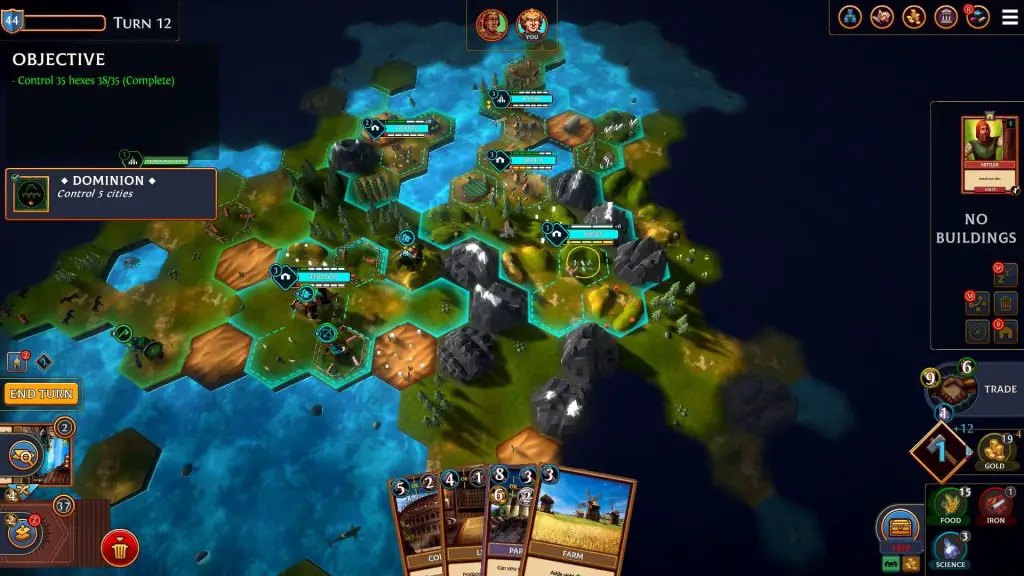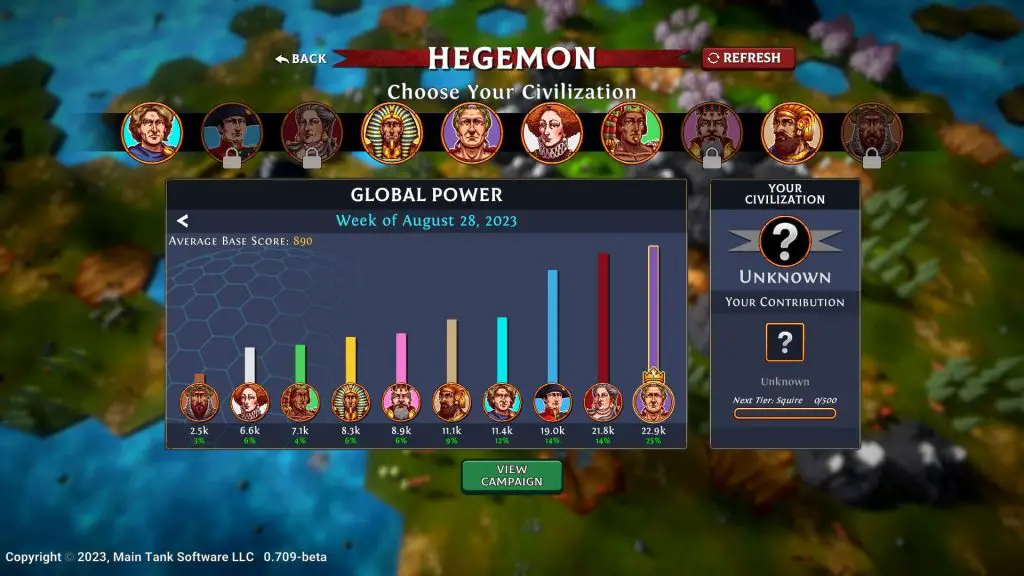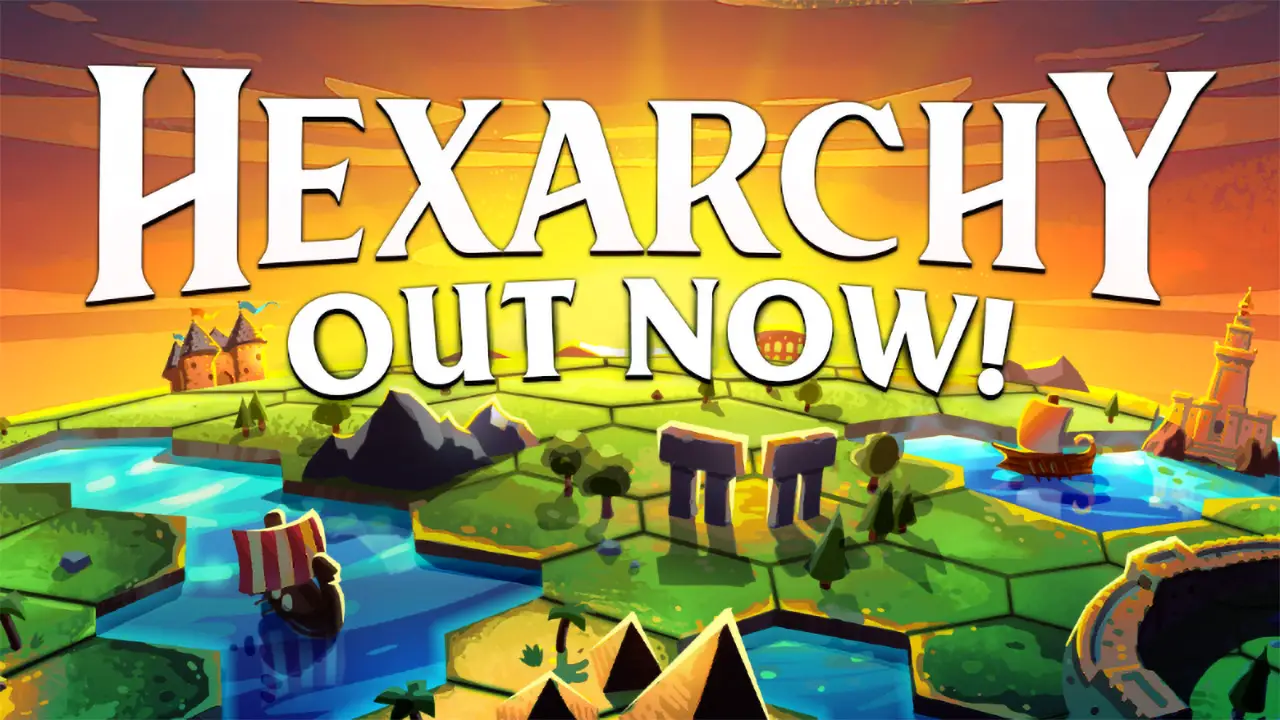Hexarchy is a 4X deck builder developed by Main Tanks Software and published by Yogscast Games. It positions itself as a fast-paced strategy game. A quick 30 to 60-minute, bite-sized, conquest-free-for-all utilizing cards as its primary means of building your civilization, sold in a 20-dollar package. But does it succeed in what it aims to do?
This is what I’m going to discuss in my Hexarchy Review:
Visuals
Hexarchy is lacking visually compared to its contemporaries. Its textures for its hexes and world can best be described as muddy and unappealing, along with some resource hexes being literal untextured colored squares dotting their respective tiles. Its units are all low poly, feel out of place when moving around, and look like something out of the PS1. But it’s appreciated that when they die, they linger for a turn to help readability when trying to keep everything from a previous turn in mind.

Most disappointingly is the card art, which has no offensively bad art but lacks a distinctive style or detail to make the cards stand out when played, which is a real shame considering how unique art for each deck could help each civilization stand out.
Gameplay
Putting aside Hexarchy’s visuals, it plays very much like a slimmed-down Civilization for those familiar with the genre, for better and for worse. Hexarchy limits itself from the ancient to the early modern period and limits itself to land units only. The lack of any diplomacy creates a tense, fast free-for-all where every player is frantically trying to gobble up as much territory as fast as possible while defending every hard-earned tile. This is encouraged by the only victory condition typically being the first player to 100 victory points, or when 30 turns have taken place, guaranteeing each match lasts the promised 30-60 minutes as advertised.
Units, buildings, civics, and technologies are all done via cards given to each player, and each civilization has two unique cards and one passive effect, such as reduced gold costs or increased culture for border growth. However, since the only goal is conquest, as conquering cities and growing your city and borders are the best way to achieve victory points, civilizations don’t feel as unique as they could since every faction is gearing up for military strategies.

Players are given cards every turn and a set amount of production to spend on cards, but many cards can alternatively be played with resources such as iron, food, or science. During a turn, players can move units that can capture tiles or gather resources for their ever-growing war machine. This extra unit action means units can do more than just stand guard when actively not engaging in combat.
Players can also use their gold to acquire more cards during their turn or resources, and they can even remove cards permanently from their deck to acquire more production to play more cards. When civic or technology cards are played, it unlocks more powerful and unique cards, presenting tense choices every round about whether a player should focus on their military or advance down the tech tree.
These intertwining systems provide engaging and thoughtful play but also guarantee every turn is filled with important decisions, which encourages the fast-paced play the game was designed for. I never found myself idly hitting the next turn button because I had nothing to do for a turn. Aside from every civilization getting two unique cards, every deck is the same, with no opportunity to change or alter their decks, creating an even playing field but no theory crafting for those seeking to create unique runs with their civilization. There are civic cards, however, which offer unique card upgrades similar to technology cards, but only one civic path can be followed at a time and doesn’t offer much variety for true deck building that many other deck builders could provide.
GAME MODES
While the game can be played single-player, it is geared for multiplayer play, with a long tree to unlock unique banners and titles for personalization, including other civilizations. Although I find locking civilizations behind an unlock path rather tedious instead of letting me explore all my choices at the start.

Other game modes include daily and weekly challenges and a week-long multi-tier game mode where all players are trying to contribute points earned in single-player challenges to their chosen civilization. All of these game modes provide optional ways to play for those extra competitive players but don’t offer too much for those who enjoy single-player play.
Conclusion
Overall, Hexarchy is a light recommendation. It took me some time to get around to the game, mostly because of the poorly built tutorial campaign, which allows players to accidentally click through important explanations. The game also struggles to have a map with a strong identity to play on, with unique variations for each run.
The game also falters with some minor hiccups, such as not being able to save single-player runs. However, the card information allows for clarity in play, and I often found myself in tense situations, with my ever-growing empire and excitedly rushing towards 100 victory points. All the while deciding if I should guard my left flank or push towards my right where another player was becoming an ever-growing threat.
Hexarchy succeeds in what it sets out to do, and those looking for a unique and small-scaled 4x will have fun with Hexarchy’s offerings.







